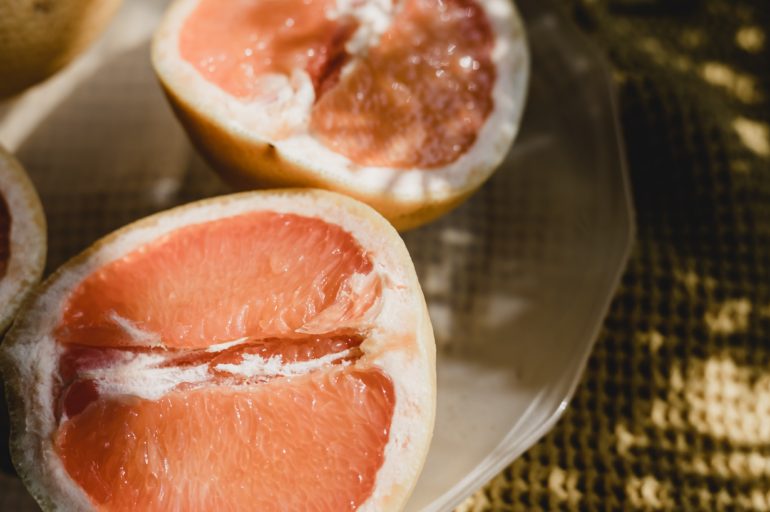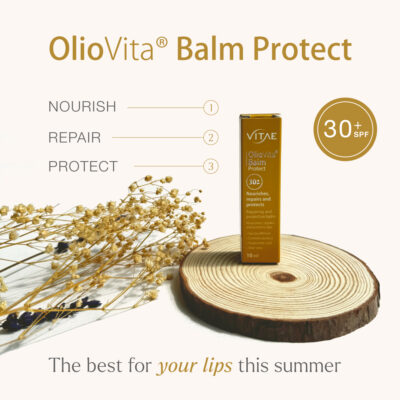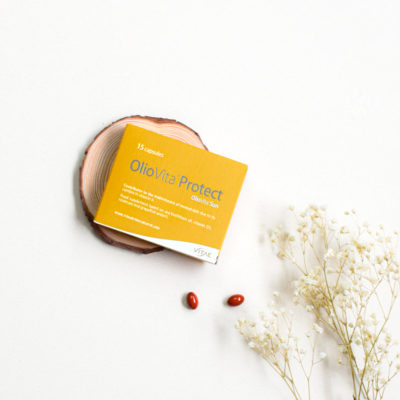Antioxidants have been on everyone’s lips for a while now thanks to the beneficial effects they have on our health. Within the wide world of antioxidants, we find polyphenols, compounds of plant origin that are very rich in antioxidants and with unique properties for our health. Among all its benefits, it stands out, the capacity to protect us against sun damage.
Arnau Vilas, member of our technical department and food technology researcher, introduces us to the wonderful world of polyphenols and explains why their properties are so beneficial to our body.
What are they and why are they so important to our body?
Polyphenols are molecules of different sizes exclusive to the plant kingdom. Polyphenols can have an incidence in certain human metabolic pathways after ingestion, generating a positive effect in different areas of human health, such as a decrease in cardiovascular affections, possible anti-cancer, anti-diabetic, neuro-protective and / or anti-inflammatory and anti-aging effects.
The anti-aging attribute is often the most popular since polyphenols are excellent antioxidant molecules and aging is enhanced by pro-oxidant effects derived from the action of free radicals.
Polyphenols are molecules that are derived from secondary pathways of plants. This means that the plants do not need the polyphenols for their correct growth and reproduction, but are molecules secreted by the plants mostly in stressful conditions, such as dry soil or excessive sunlight.
There are more than 8,000 described polyphenol structures, broadly grouped according to similarity. A well-known group includes anthocyanins, which are responsible for the red and blue color of the fruits and are mainly secreted by the action of sunlight (in relation to its maturity).
It is important to know that polyphenols are not essential for the correct development or physiological functioning of the human organism. However, the benefits associated with its intake have led us to study them and incorporate them into our diets
Which foods are rich in polyphenols?
There are plants that by nature contain higher amounts of polyphenols than others. Wild berries, such as blueberry or blackberry, are a great source of polyphenols. The vegetables with the highest content of polyphenols are eggplant and celery, among others. Cocoa, as well as coffee, are also great sources of polyphenols.
Any product of plant origin will present a different polyphenol profile and in the end the impact on health will basically depend on the type of polyphenol, its bioavailability and the ingested amount.
Can polyphenols help us combat sun damage? Why?
Direct sun exposure, specifically type A and B ultraviolet rays, results in skin damage. Sun exposure results in the formation of oxidative compounds, that is, compounds that can lead to damage proteins and membrane structural lipids. These damages can be seen in a loss of rigidity and elasticity of the skin, increasing its roughness and sensitiveness to the touch.
Also, prolonged exposure to the sun can lead to genetic DNA damage, which can result in the appearance of melanoma. However, there are products such as natural sunscreens that act as a barrier and prevent the penetration of ultraviolet rays into the skin, thus reducing the damage.
But there are other mechanisms with which we can combat sun damage. One of them is the intake of polyphenols, which, as a result of their absorption and physiological function, enhances the protective mechanisms of the skin. In other words, they promote skin care derived from its intake rather than its topical application (like natural creams).
Mechanisms by which different polyphenols can help mitigate or prevent skin damage from sun exposure have been seen and reviewed. One of the critical points at which polyphenols can act is reducing stress and external oxidative damage (caused by ultraviolet light). Polyphenols attack radicals created during oxidative processes, neutralizing them and slowing down the oxidative process.
Another critical point is the modulation of transcription factors of pro-inflammatory molecules, as well as the inhibition and prevention of DNA damage that may occur. Some polyphenols, such as those in green tea, can reduce the growth of a melanoma in later stages of exposure. All these effects translate into smoother, more elastic and healthy skin, reducing premature aging.
Rosemary and grapefruit polyphenols have been gaining interest in recent years. On one hand, grapefruit has a very varied polyphenolic profile, with polyphenols that have a high absorption and metabolism capacity (in human tests), as well as a high antioxidant capacity. On the other hand, rosemary polyphenols have a great antioxidant capacity, but also a great anti-inflammatory, anti-diabetic, and anti-carcinogenic capacity. These qualities make polyphenol extracts, both rosemary and grapefruit, ideal for skin protection, among other beneficial effects.
So, should we take grapefruit and rosemary polyphenols to take care of our skin?
As I have already mentioned, there are many types of polyphenols that can be useful for the prevention and / or mitigation of the effects of sunlight on the skin. In topical application, there are many groups that can have a beneficial effect. However, topical application is not always possible, especially on a day-to-day basis. In these cases, the only alternative is to nourish the skin from the inside, with the intake of compounds that help us prevent oxidative damage caused by sunlight. At this point, not all polyphenols are useful since not all of them are absorbed in the same way nor have the same effect once absorbed.
Fortunately, there are studies on the benefits of taking certain polyphenols to prevent deterioration of the skin. Rosemary and grapefruit polyphenols have been studied on more than one occasion for their positive effect. These polyphenols are effectively absorbed and promote the epidermis protection against oxidative damage.
Oral supplementation combining rosemary and grapefruit polyphenolic extracts will contribute to the protection of the skin, promoting an adequate concentration of protective compounds (polyphenols themselves) and reducing the impact of free radicals that can appear (such as proinflammatory cytokines or lipoperoxides), as well as decreasing its production. All this will translate into a decrease in roughness, an increase in the elasticity of the skin and a decrease in the areas of burn (reddish areas of the skin) caused spontaneously by exposure to ultraviolet rays.







